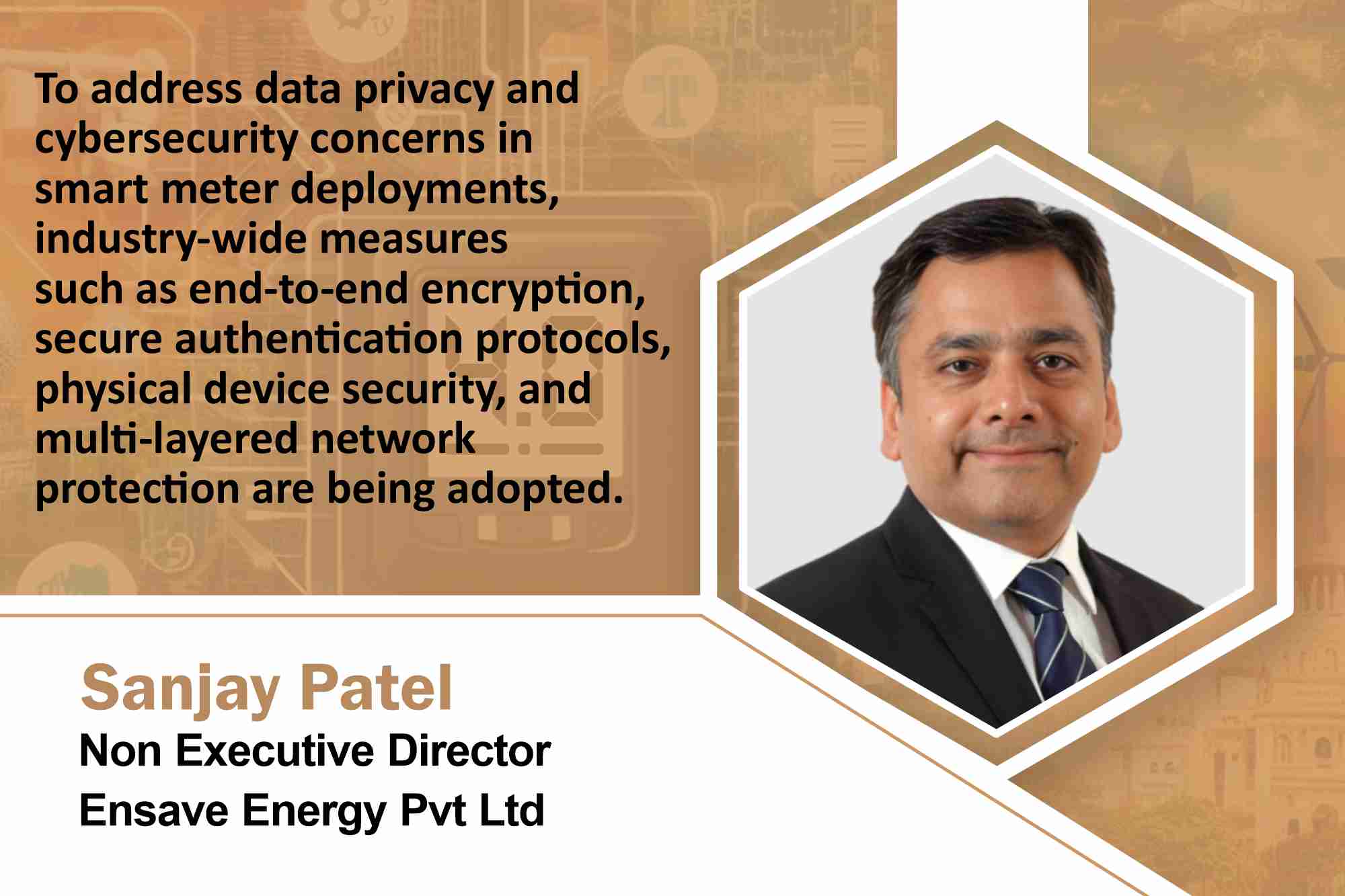Ensave Energy boosts power distribution modernisation with Schneider Electric
By Staff Report June 25, 2025 11:37 am IST
By Staff Report June 25, 2025 11:37 am IST

Schneider Electric’s IoT-enabled technologies, extensive product portfolio (e.g., switchgear, transformers, PLCs) and partnerships align closely to reduce AT&C losses, eliminating the ACS-ARR gap by 2024-25 and modernising the power sector.
The Indian power distribution landscape is rapidly advancing, especially with the help of the Revamped Distribution Sector Scheme (RDSS), under which the government aims to deploy 250 million smart meters. Sanjay Patel notes that, despite challenges in implementation, key industry player Schneider Electric, through Ensave Energy, is contributing innovative solutions to support the ambitious modernisation goals. Let us know what he further explains.
What are the advancements in installing 250 million smart meters under the RDSS scheme?
The target of installing 250 million smart meters under the Revamped Distribution Sector Scheme (RDSS) has shown notable advancements, though challenges persist. The RDSS, launched in July 2021 with a budget of ₹3.03 lakh crore (including ₹97,631 crores in central government support) over five years (FY 2021-22 to FY 2025-26), aims to install 250 million prepaid smart meters to enhance billing accuracy, reduce aggregate technical and commercial (AT&C) losses to 12-15 percent and eliminate the average cost of supply-average revenue realised (ACS-ARR) gap by 2024-25.
The original deadline for installing 250 million smart meters was March 2025. However, with only 7.3 million installed by November 2024 and 20.85 million by February 2025, the pace has been slower than required (approximately 5.6 million meters per month needed to meet the target). The Ministry of Power acknowledged to the Standing Committee on Energy that significant work remains, particularly in the area of smart meters. It proposed a two-year extension of the RDSS until FY 2027-28 to achieve the goal.
Challenges include delays in tender issuance, approvals, testing (including field installation and factory acceptance tests), setup of the direct debit facility, supply chain issues (e.g., semiconductor shortages), and workforce issues. The smart metering implementation has resulted in AT&C losses being reduced from 22 per cent in FY 2021 to 16.28 per cent in FY 2024, although a slight increase occurred since FY 2023. Moreover, the government has implemented several measures to ensure transparency, efficiency and a consumer-centric rollout under the scheme. The Monitoring Committee tracks progress, approving action plans and detailed project reports (DPRs) for 46 Distribution Companies (Discoms) across 28 states and union territories. The government emphasises integrating meter data with billing, outage management, and analytics systems for near-real-time insights, driving informed decisions on loss reduction and demand forecasting.
How are the key challenges in the transition from legacy to smart meters being addressed?The transition from legacy to smart meters marks a pivotal move toward modernising energy grids. Still, it poses challenges, including infrastructure complexity, high costs, cybersecurity risks, data privacy concerns, and the integration of legacy systems.
Schneider Electric plays a key role in addressing these issues through its Advanced Metering Infrastructure (AMI) solutions, which offer seamless integration, scalability and data analytics. The company ensures robust cybersecurity by embedding protection into its systems, promoting resilience, efficiency and adherence to global standards. It also emphasises stakeholder collaboration and supports both physical and operational security.
To address data privacy and cybersecurity concerns in smart meter deployments, industry-wide measures such as end-to-end encryption, secure authentication protocols, physical device security, and multi-layered network protection are being adopted. Privacy policies, governance frameworks, and the use of emerging technologies, such as AI, for anomaly detection, reinforce these. Together, these efforts enhance the reliability, security and trustworthiness of the smart metering ecosystem.
We use cookies to personalize your experience. By continuing to visit this website you agree to our Terms & Conditions, Privacy Policy and Cookie Policy.